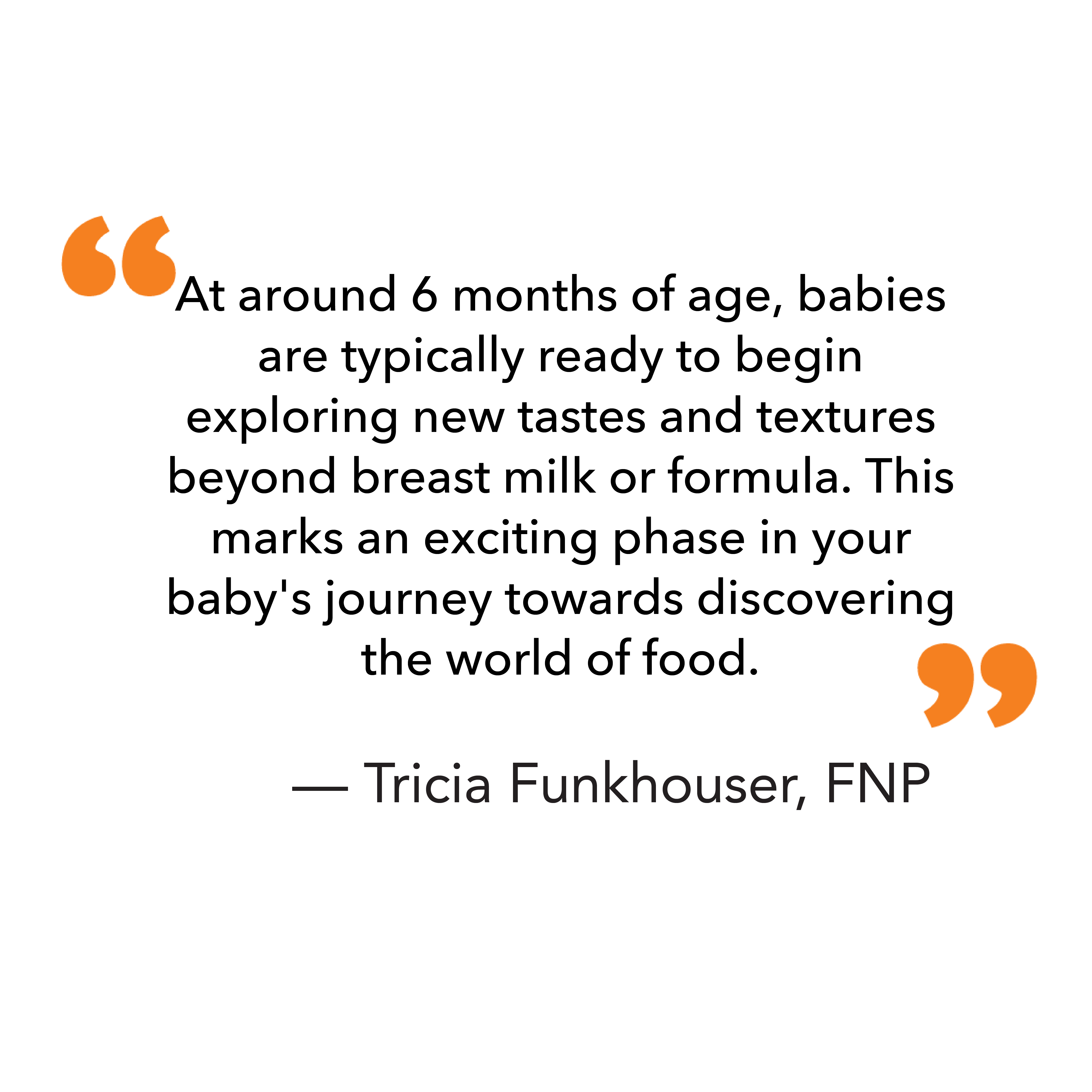
Starting Solids


As your baby continues to grow, we are reaching a significant milestone in their development – introducing solids into their diet. At around 6 months of age, babies are typically ready to begin exploring new tastes and textures beyond breast milk or formula. This marks an exciting phase in your baby’s journey towards discovering the world of food. Introducing solids at this stage is crucial, but there are some basics to check before diving into this new world of tastes and textures.
While breast milk or formula will continue to provide essential nutrients, introducing solids ensures your baby receives a broader range of nutrients necessary for their growth and development as they continue to age and grow. Most babies will watch you intently as you eat, or begin to reach for your food or utensil, showing interest in this new form of nutrition. At around 6 months, most babies have developed the necessary skills, such as the ability to sit up with support and showing interest in food, to begin trying solid foods.
Babies at this stage of life are beginning to be more aware of their surroundings, exploring new skills and experiences. Offering a variety of textures and flavors early on helps in developing your baby’s palate and encourages them to become adventurous eaters later on, particularly in toddlerhood.

In order to set you and your baby up for success, there are some important points to keep in mind as you start this new phase. Start the introduction slowly. Begin with single-ingredient, soft foods such as iron-fortified oat cereal, pureed fruits (like bananas or applesauce), or vegetables (such as sweet potatoes or carrots). Offer a small amount once a day and gradually increase the frequency as your baby becomes accustomed to eating solids.
Watch your baby for signs of readiness. Six months is not set in stone as the time to start solids. Your baby might be ready slightly earlier than that, or even not quite there yet. Look for cues from your baby, such as sitting up with support, showing interest in food, and being able to move food from the front of the mouth to the back for swallowing.
It’s important to introduce certain foods slowly, depending on your family history and baby’s reactions. Foods that are choking hazards, such as whole grapes, nuts, or large chunks of food should not be given until your baby is much older and has the tongue movement and chewing development to support bite-sized solids. Also, be cautious with allergenic foods like eggs, fish, and nut products; introduce them one at a time and watch for any adverse reactions. Babies under a year should never be given honey or food containing honey.
Remember that breast milk or formula should still be the primary source of nutrition for your baby. Solids are complementary and should not replace milk feeds as the primary source of nutrition. As your baby ages, he or she may begin to decrease interest in breast or bottle feeding. Use meal time to introduce a cup with a straw for your child to begin developing the skill of taking water from a cup.
Every baby is different, and it may take time for your little one to get used to eating solids. Be patient and continue offering a variety of foods, even if your baby initially seems hesitant. Mealtime should be a positive and enjoyable experience for both you and your baby. Make it a time for bonding and exploration, free from distractions like screens or phones.
Lastly, trust your instincts and enjoy this exciting phase with your little one. If you have any concerns or questions along the way, don’t hesitate to reach out to your pediatric provider for guidance.
Schedule an Appointment Today!

